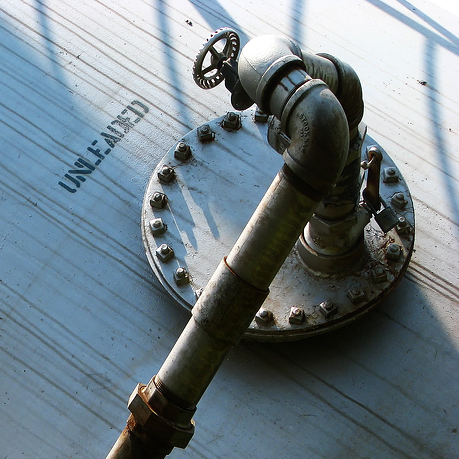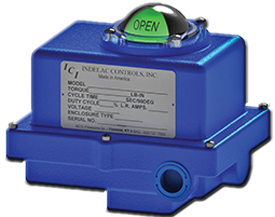The suitability of a valve for a specific application is defined by the materials used in relation to the transported fluid as well as its mechanical design. Here is Indelac Valve Selection Guide.

Valve Selection Table
The tables below can be used as a valve selection guide taking into consideration the state of material, its nature and the function of the valve.
| Conveyed Fluid | Nature of Fluid | Valve Function | Type of Disc |
| Liquid | Neutral (Water, Oil, etc) | On/Off | Gate |
| Rotary ball | |||
| Plug | |||
| Diaphragm | |||
| Butterfly | |||
| Plug gate | |||
| Control valve, modulating | Globe | ||
| Butterfly | |||
| Plug gate | |||
| Diaphragm | |||
| Needle | |||
| Corrosive (Acid, alkaline etc.) | On/Off | Gate | |
| Plug gate | |||
| Rotary ball | |||
| Plug | |||
| Diaphragm | |||
| Butterfly | |||
| Control valve, modulating | Globe | ||
| Diaphragm | |||
| Butterfly | |||
| Plug gate | |||
| Hygienic (Food, beverages, drugs etc) | On/Off | Butterfly | |
| Diaphragm | |||
| Control valve, modulating | Butterfly | ||
| Diaphragm | |||
| Squeeze | |||
| Pinch | |||
| Slurry | On/Off | Rotary ball | |
| Butterfly | |||
| Diaphragm | |||
| Plug | |||
| Pinch | |||
| Squeeze | |||
| Control valve, modulating | Butterfly | ||
| Diaphragm | |||
| Squeeze | |||
| Pinch | |||
| Gate | |||
| Fibrous Suspensions | On/Off, Control valve, modulating | Gate | |
| Diaphragm | |||
| Squeeze | |||
| Pinch |
| Conveyed Fluid | Nature of Fluid | Valve Function | Type of Disc |
| Gas | Neutral (Air, Steam etc) | On/Off | Gate |
| Globe | |||
| Rotary ball | |||
| Plug | |||
| Diaphragm | |||
| Control valve, modulating | Globe | ||
| Needle | |||
| Butterfly | |||
| Diaphragm | |||
| Gate | |||
| Corrosive (Acid vapors, chlorine etc.) | On/Off | Butterfly | |
| Rotary ball | |||
| Diaphragm | |||
| Plug | |||
| Control valve, modulating | Butterfly | ||
| Globe | |||
| Needle | |||
| Diaphragm | |||
| Vacuum | On/Off | Gate | |
| Globe | |||
| Rotary ball | |||
| Butterfly |
| Conveyed Fluid | Nature of Fluid | Valve Function | Type of Disc |
| Solids | Abrasive Powder (Silica, etc) | On/Off, Control valve, modulating | Pinch |
| Squeeze | |||
| Spiral sock | |||
| Lubricating powder (graphite, talcum, etc) | On/Off, Control valve, modulating | Pinch | |
| Gate | |||
| Spiral sock | |||
| Squeeze |
Valve Type Pros and Cons
Because everything is easier to understand with a table, here is another one summarizing pros and cons for the most common valves.
| Valve | Advantages | Disadvantages |
| Butterfly | Quarter turn | Difficult to clean |
| Open port | Difficulty with slurries | |
| Used with chemical or corrosive media | Throttling limited to low differential pressure | |
| Compact, lightweight design | Potential for cavitation and choke | |
| Available in large sizes | Unguided disc movement is affected by flow turbulence | |
| Low pressure drop and high-pressure recovery | ||
| High coefficient of flow | ||
| Ball | Superior ease of operation | Poor throttling characteristics |
| Maintains and regulates high volume, | Difficult to clean, leads to contamination | |
| high pressure, and high temp flow | ||
| Rugged construction and long service life | ||
| Low purchase and maintenance cost | ||
| Able to function without side loads | ||
| Permits inspection and repair of seats and seals without removing the valves' body from the line | ||
| Does not require lubrication | ||
| Diaphragm | Extremely clean | Can only be used in moderate temperature (-60 to 450ºF) |
| Leak proof seal | Can only be used in moderate pressures (approximately 300psi) | |
| Tight shut-off | Cannot be used in multi-turn operations | |
| Easy maintenance | No industry standard face-to-face dimensions | |
| Repairs can be made without interrupting pipe line | The body must be made of corrosive resistant material | |
| Reduce leakage to the environment | ||
| Gate | Available in large sizes | Low pressure limitations |
| Can be used with slurries and viscous liquids | Slow open and close time | |
| Used as a shut off valve | Erosion of the seat and disk can occur | |
| Easy to maintain and disassemble | Poor throttling characteristics | |
| Inexpensive | Difficult to repair | |
| Inherently fire-safe (when used with a metal sheet) | Should not be used in sanitary applications | |
| Bidirectional | ||
| Globe | Can be fast-acting | High head loss |
| Precise control | Large opening for disk assembly | |
| Can be used in high-pressure systems | Heavier than other valves | |
| Cantilevered mounting of the disk to the stem | ||
| Low coefficient of flow | ||
| Not good for clean or sterile applications | ||
| Pinch | Very Clean | Cannot be used in high temperature applications |
| Excellent drainage | Cannot be used in high pressure applications | |
| Minimal turbulence | Cannot be used with gas media | |
| Low airborne contaminants | ||
| Low maintenance | ||
| Low weight | ||
| Can be used in explosion-proof lines | ||
| Inexpensive |
Once the right valve has been selected, it is time to select the right actuator! See link below to Indelac Actuator Selection Guide:







